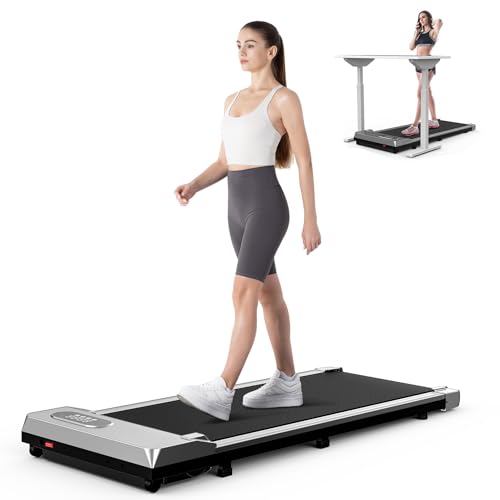20 Walking Machine Websites Taking The Internet By Storm

The Walking Machine: A Comprehensive Guide to Your Fitness Companion
In today's fast-paced world, where time is a high-end, preserving a consistent exercise routine can be a difficulty. For lots of, a walking machine-- commonly referred to as a treadmill-- acts as an ideal fitness buddy. This article provides a thorough take a look at walking machines, including their benefits, types, maintenance ideas, and frequently asked questions.
Why Choose a Walking Machine?
Walking machines offer a useful and efficient method to include cardiovascular exercise into life. Here are several crucial advantages:
- Convenience: Walking machines enable people to exercise anytime, despite weather or time restraints. They are best for hectic schedules.
- Versatility: Users can stroll, jog, or perform at their own pace and intensity.
- Security: Walking machines provide a lower risk of injury compared to outside walking or running, particularly for novices or those recuperating from injuries.
- Tracking Progress: Many treadmills featured built-in monitors that track metrics like speed, distance, and calories burned.
Types of Walking Machines
When considering a walking machine, it's necessary to pick the best type based upon specific physical fitness objectives and area restrictions. Below are the primary types of walking machines:
| Type | Description |
|---|---|
| Handbook Treadmills | These machines do not have a motor, and users need to stroll or go to turn the belt. |
| Electric Treadmills | Powered by an electric motor, permitting users to set the speed and slope effortlessly. |
| Folding Treadmills | Created for simple storage, these treadmills can be folded up when not in usage. |
| Desk Treadmills | Perfect for a dual work and exercise environment, these compact machines enable walking while working. |
| Incline Trainers | These allow users to simulate uphill walking, boosting exercise intensity and calorie burn. |
Selecting the Right Walking Machine
Picking the best walking machine can considerably impact motivation and efficiency. Here are some factors to think about:
Key Features to Look For
- Motor Power: A powerful motor ensures a smooth and constant exercise. For Clifford Ferrell , a 1.5 HP motor is typically sufficient; for heavier usage, search for 3.0 HP and above.
- Belt Size: A larger and longer belt provides more area for a comfortable stride. Requirement sizes vary from 16 inches large and 50 inches long.
- Slope Options: Adjustable slope settings can simulate walking or running uphill, increasing the intensity of the exercise.
- Shock Absorption: Good shock absorption reduces the threat of joint injuries and enhances convenience.
- Console Features: Look for built-in workouts, heart rate screens, and connectivity features like Bluetooth for a more engaging experience.
Spending plan Considerations
Walking machines been available in a broad variety of costs, depending on functions and building quality. Here's a rough budget breakdown:
| Price Range | Features |
|---|---|
| Under ₤ 300 | Fundamental handbook or small electric treadmills with restricted features. |
| ₤ 300 - ₤ 700 | More advanced electric treadmills with slope, medium power motors, and much better service warranties. |
| ₤ 700 - ₤ 1500 | High-quality electric treadmills with larger integrated display screens, substantial functions, and service warranties. |
| ₤ 1500 and above | High-end designs offering innovative innovation, features, and long lasting building for serious physical fitness enthusiasts. |
Upkeep Tips for Your Walking Machine
To make sure longevity and optimal efficiency of a walking machine, think about the following maintenance suggestions:
- Regular Cleaning: Dust and sweat can build up on the machine and the belt. Wipe down the surfaces and clean the belt frequently.
- Lubrication: Depending on the model, lubricating the running belt occasionally can avoid wear and tear. Check the producer standards for suggested lubrication schedules.
- Evaluation: Periodically inspect the machine for loose screws or worn parts. Tighten and change as required.
- Calibration: Occasionally, examine the calibration of your machine's metrics to guarantee they offer precise data.
- Proper Use: Follow the maker's suggestions for weight limits and functional guidelines.
Frequently Asked Questions About Walking Machines
1. Are walking machines a great workout?
Yes, walking machines offer an excellent cardiovascular exercise, can assist with weight-loss, and enhance general health.
2. How frequently should I utilize a walking machine?
Go for at least 150 minutes of moderate-intensity aerobic activity each week, which can quickly be accomplished with routine sessions on a walking machine.
3. Can I reduce weight on a walking machine?
Yes, incorporating a walking machine routine into a healthy diet plan can promote weight reduction, especially if combined with intervals and incline training.
4. Is it safe for elders to use a walking machine?
Yes, walking machines can be safe for elders with low-impact settings and safety functions like handrails. However, people must seek advice from with their doctor before starting any exercise program.
5. What's the difference in between a treadmill and a walking machine?
The term "walking machine" usually refers to a treadmill intended for walking, while "treadmill" can refer to machines used for various strengths, consisting of running.
With their versatility and benefit, walking machines can substantially boost one's fitness journey. By carefully picking the best type, making sure correct upkeep, and including various workout strategies, users can optimize their walking machine's benefits. Similar to any workout regimen, consistency is essential to accomplishing lasting physical fitness outcomes.

